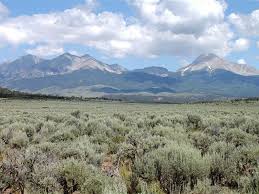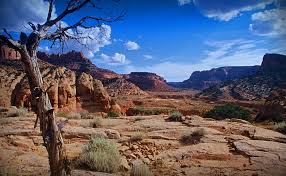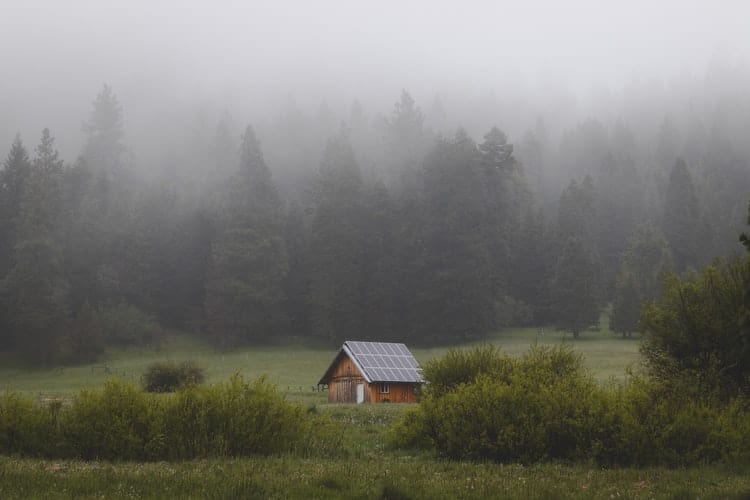
If you want to get off the grid, you’re not alone. According to Home Power Magazine, an estimated 180,000 families live off the grid in the United States. Globally, the number of people living off-the-grid reaches a whopping 1.7 billion! Who are these people that choose to leave the comforts of civilization and strike out on their own? You have indoor plumbing, a warm bed, and a grocery store less than a mile from your home. Why would you ever want to leave all that behind?
That’s a great question. And the answers to it are as diverse as the people who pack their things and moved somewhere remote, unconnected to the utility grids. But all these people have one thing in common; they want to find a simpler, more authentic life. Or, in a word, they want freedom.
The term “off the grid” blankets several types of living styles and takes many forms. But at its most basic, “living off-the-grid” means living wholly or partly disconnected from public utilities like sewage, water supply, and electricity. Even an urbanite who puts solar panels on her home and a backup battery unit in the garage then cuts ties with the local electric company can claim she’s off-the-grid.
In practice, off-the-grid living takes many forms and exists as a continuum, not an either/or proposition. For some, getting off the grid means that they create a fully self-sustained environment, producing their own food and bartering with neighbors for anything they can’t make themselves. Some choose to abandon all modern conveniences and dig an outhouse and build a cabin to call home. Others want to disconnect from some utilities, like electricity, while keeping access to public sewage and plumbing services. While others create all the amenities of modern life right there on their homestead, completely detached from public utilities.
No matter what kind of off the grid life you want, if you’re thinking about shedding the baggage of modern living and building your homestead, this article is for you.
Top Three Types Of Off-The-Grid Living
When considering moving to an off the grid lifestyle, take great care to understand your comfort level with the different ways to leave the grid behind. Most people who want to disconnect fall into one of these three categories:
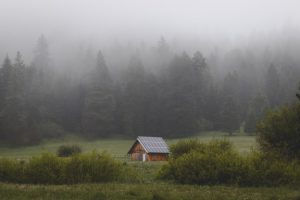
Off the grid and roughing it
If you’re the type of person that really, really hates all the trappings of modern life and you long to live as simply as possible, this might be for you. All you need for this is a piece of land where no one will bother you, a reliable water supply, and enough space to build a cabin and an outhouse. If there’s a creek near the cabin, you might choose to carry water up to the cabin. Or you to dig a well and install a hand pump to get water. You’ll have light when the sun comes up and firelight when it sets. This type of off-gridding is the most extreme form, and it will probably only appeal to a small number of people. However, hunters and backpackers may want to set up this kind of camp for their wilderness adventures. If this appeals to you, no law says you have to live this way all year round!
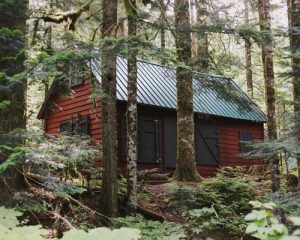
Living Off The Grid-ish
Of course, roughing it like that isn’t for everyone. Maybe you’re just looking to lower your monthly expenses and live a little greener. More and more people watch the price of solar panels decline and take the plunge getting a least partly off the grid. To get the most of your panels, all you really need is a roof or piece of land with a clear view of the southern sky. With products like Tesla’s Power Wall entering the market, storing solar power is easier than ever.
Many people who go this route may even opt to stay on the grid. Power companies often buy excess solar power if you’re overproducing. Also, by remaining attached to the grid, if your solar array fails for some reason, your home doesn’t suddenly go dark.
If you’re the sort of person who’s looking to get back to nature and simplify your life, it’s still possible to be semi-connected to the grid. You might find a great, remote location to build a home that’s perfect for solar and septic, but you want to tap into the local water supply. Or you might dig a well for water, but put in a sewer line if a septic tank isn’t a suitable option for your site.
There’s a ton of different combinations getting partly off the grid can take. Be honest with yourself and your comfort level. Leaving the conveniences you’ve come to depend on isn’t an easy task. Plan accordingly!
Living Grid Free – In Style
Finally, maybe you love the idea of going it alone, but you still like to surf the web and have central heating and cooling. Perhaps you have a knack for growing food and raising livestock. All you need to be an off the grid is to produce electricity and find a way to get water into your house and get waste out of it. Fortunately, the technology for off-grid living has come a long way.
But this technology isn’t cheap. If you already have a homestead, you can spread the cost of your power, sewage, and water supplies over a few years. If you’re planning on buying a piece of property to build your gridless dream, make sure you know where you’re water will come from, how you’ll supply it with electricity, and what type of sewage is best for your situation. You don’t want to buy a new piece of land only to realize it’s not suitable for solar or digging a well will cost too much.
Best Off-The-Grid Tech For Living In Style
There are many ways to get power and live off the grid. However, you should keep in mind that each method has some drawbacks. That’s why you should plan on using as many different ways to generate power as you can. And make sure you get the biggest deep-cycle storage batteries backup system you can afford to keep your home powered up.
Power Options
- Solar – when people think of switching to off-grid power, solar often comes to mind first. It’s true that the price of photovoltaic panels offers an increasingly economical choice for disconnecting from utility power. But solar energy has some significant limitations to consider. To get the most from your solar panels, they need an open southern view for most of the day. Shadows are the enemy of solar panels, and a shadow from a large tree can significantly diminish the power the panels can generate. If you have the technical know how you can build a system that tracks with the sun to squeeze as much power as possible out of your solar panels.
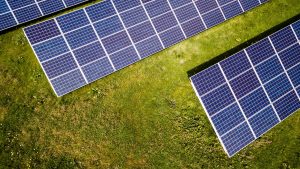
- Wind – wind turbines are great for open areas that get a lot, well… wind. It’s possible for small turbines to produce some electricity for your home. However, larger wind turbines are more efficient than the smaller, roof-top models. If your new property has the space to build a tall wind tower and you get plenty of sustained wind, this might be a good option. Or, if you’re only looking for a way to supplement the power generated from your solar panels, this might be something to look into, as well. However, be sure to plan carefully. It’s important to be sure the property you plan to buy lives up to your expectations.
- Micro hydro-electric – for properties with a sufficient amount of flowing water, micro-hydro power is a steady form of energy. And it’s relatively easy to set up, too! A basic system requires only a few components:
- Water conveyance system to deliver water to the turbine
- Turbine, pump, or waterwheel to transform the energy of flowing water into rotational energy.
- Alternator or generator that and convert the rotational energy into electricity.
- A regulator that controls the generator.
- And wiring to carry the electricity.
If you’re interested in using this approach to get power to your home, make sure that your property has enough running water year-round to generate the electricity you need. Also, consider where your water comes from. You don’t want someone building a dam upstream to leave you in the dark.
- Generators – there are a number of generators on the market that provide sufficient backup power to your home when you need it. If you’re thinking about getting backup generator power, keep in mind that it requires a steady supply of fuel to run. You can hook some generators into the natural gas grid, which gives constant power without the fear of running low on fuel. However, if you want to get off the grid, you’ll need a tank to store the propane, gasoline, or diesel the generator requires.
Dealing With Waste
Compost toilet – If you’re like a lot of off-the-gridders, you don’t want to let anything go to waste… not even your waste. And a compost toilet let you reuse your poop in your garden! In it’s purest form, a compost toilet is a bucket used to do your business. You can even put a toilet seat on top of it for comfort. After each use, put some sawdust in the bucket. When it’s full, replace the full bucket with a clean one. Make sure to put extra sawdust on top of your full buckets. Separating pee and poop helps the composting process, and for that, there are some urine-diverting toilet seats available. You can also purchase composting toilets that use a hand crank or battery pack to speed up the composting and reduce the smell. Composting toilets can get pricey, but if you have the means, they make your off-grid living more enjoyable.
Septic tank – Another common choice for unhooking from grid sewage is to install a septic tank system. Septic tanks require more engineering and effort, however. You’ll need to learn how to install the septic tank, lay out a leach field, and how to maintain the system. There are many types of septic tanks systems to choose from, but keep in mind that a septic tank system needs water to work correctly. If you plan on installing a septic tank system on your property, be sure to research which type is suitable for your land, and make sure you have enough water to supply it.
Where To Get Water
Every living thing needs water to survive. If you’re planning to disconnect from your local water supply, first make sure you know where your water will come from.
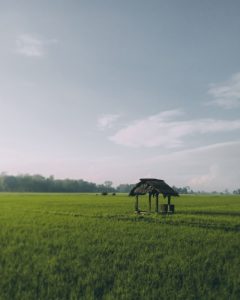
Dig a well – if you plan on digging a well, there are two critical considerations to keep in mind; how will you make sure the water is clean and how deep will you have to drill.
If you’re not careful, any number of things can contaminate the water from your well, from septic leach fields to effluent pools. Before drilling, you’ll need to locate potential contamination sources near your property and find out the local rules for the minimum safe distance from these contamination sources. Find the highest point within your safe drilling area to build your well and choose a spot that’s probably not flowing from contamination source.
Also, keep in mind that this may not be a great DIY project. Try and find a certified well driller that has experience drilling in your property’s area. A professional may point you to a drilling site that you hadn’t considered and point out dangers you hadn’t considered.
Install A Cistern – a cistern is a way to collect rainwater and precipitation that falls off the roof of your home to store for later use. If your property doesn’t have groundwater, or if you need more water than your well provides, a cistern could be the solution.
There are a few advantages to collecting rainwater over digging a well, too. For one, rain tends to be cleaner and taste better. Installing a cistern is relatively inexpensive and requires little maintenance.
The biggest decision is whether to put it above ground or underground. An above ground cistern is simpler to install, and the weight of the water is usually enough to pressurize your home’s water. However, if you bury the tank, the water stays cooler in the summer, so less water evaporates and there’s no danger of the water freezing in the winter. Whichever you choose, a cistern can be an inexpensive way to augment your water supply.
Need Some Off-The-Grid Land?
If you feel the call of the wild and want to be free of city life, let Generation Family Properties is committed to helping you find the perfect property to fulfill your dreams. If you want to get off-the-grid, we are in the business of helping you to create memories for generations to come. Contact us at 775-234-2058. We’d be happy to answer all your questions and provide additional resources to help you determine if off the grid living is right for you.
Photos courtesy of Alex Bierwagen and thomas shellberg and
Andreas Gücklhorn on Unsplash

